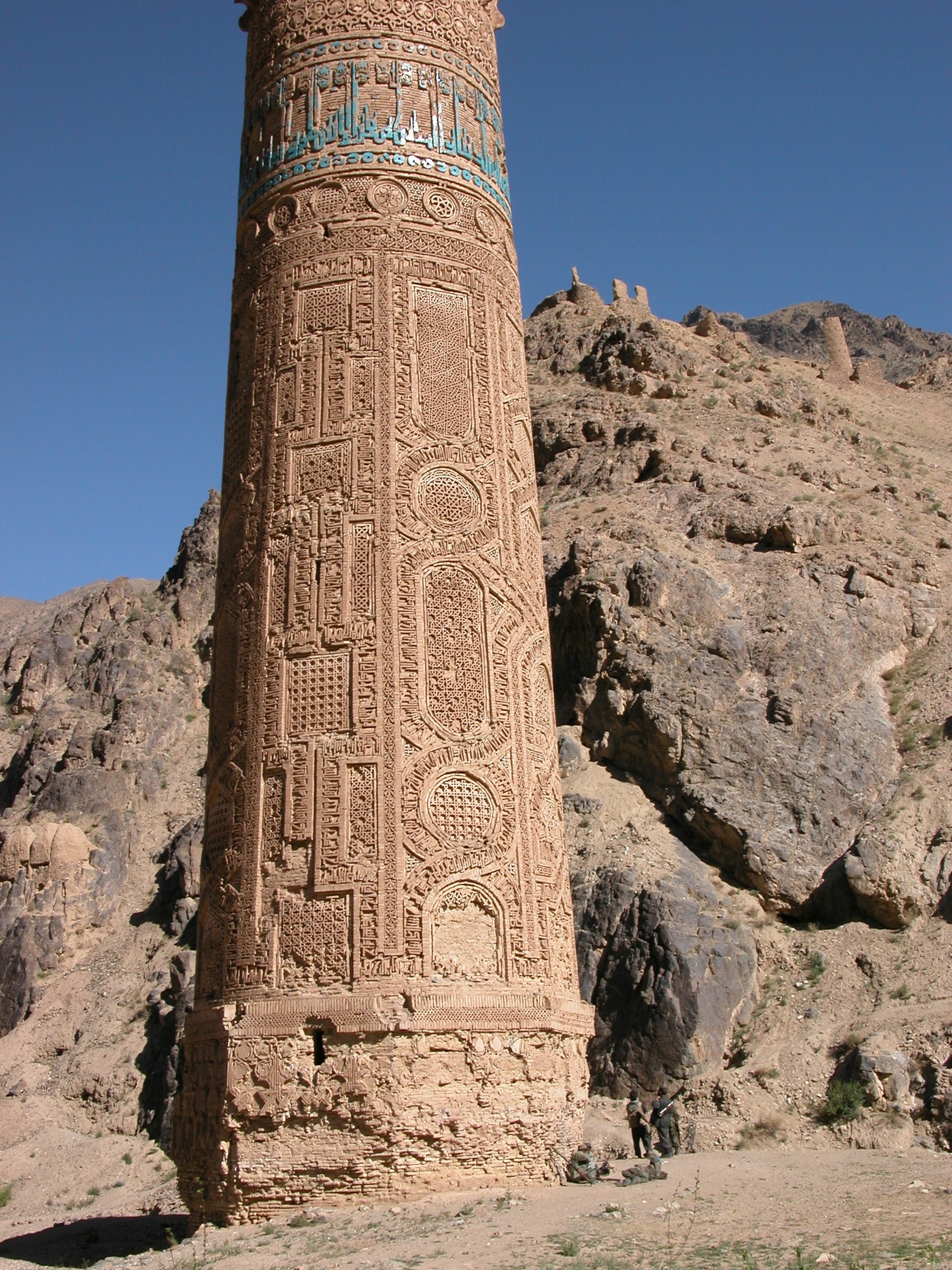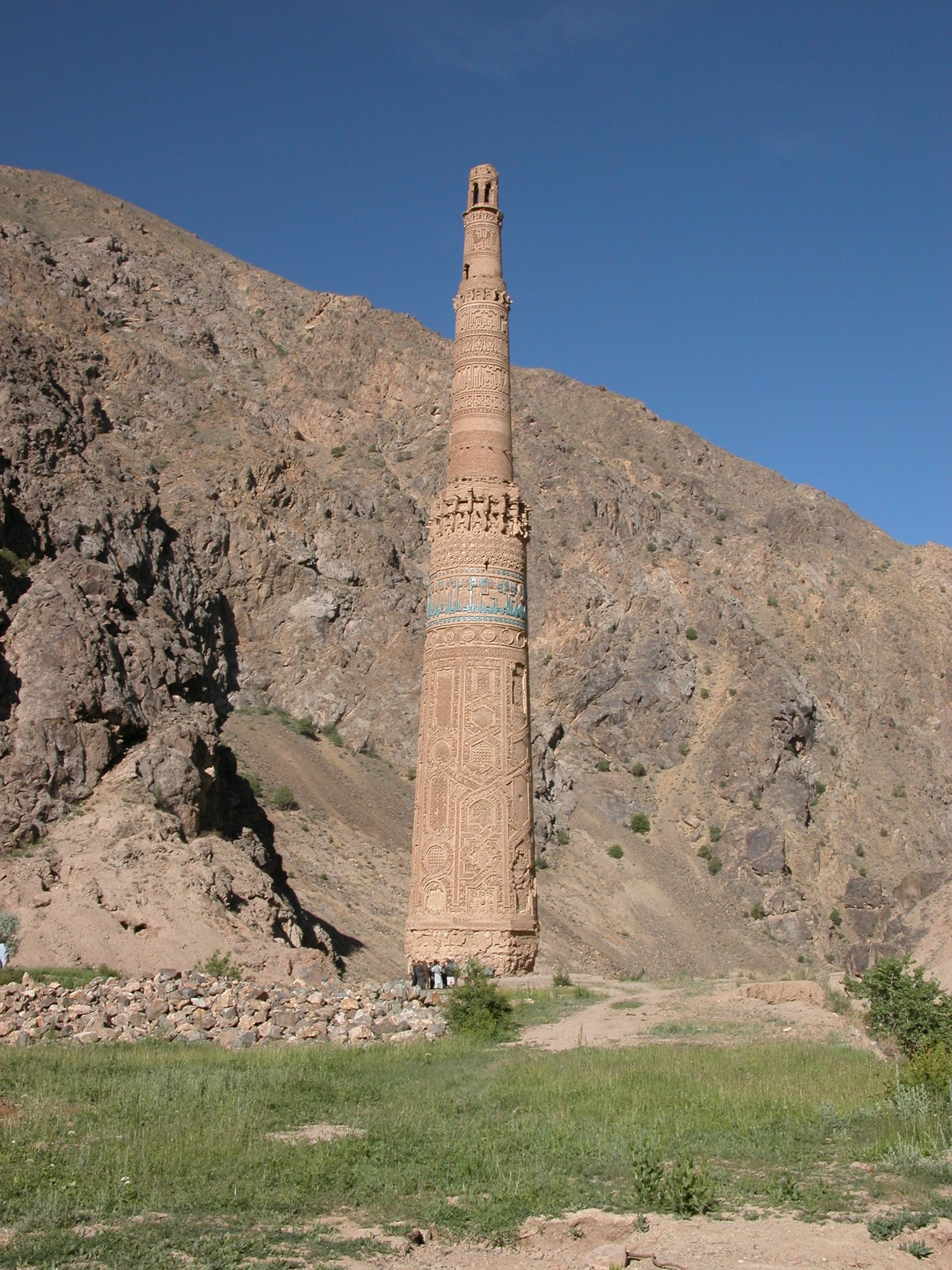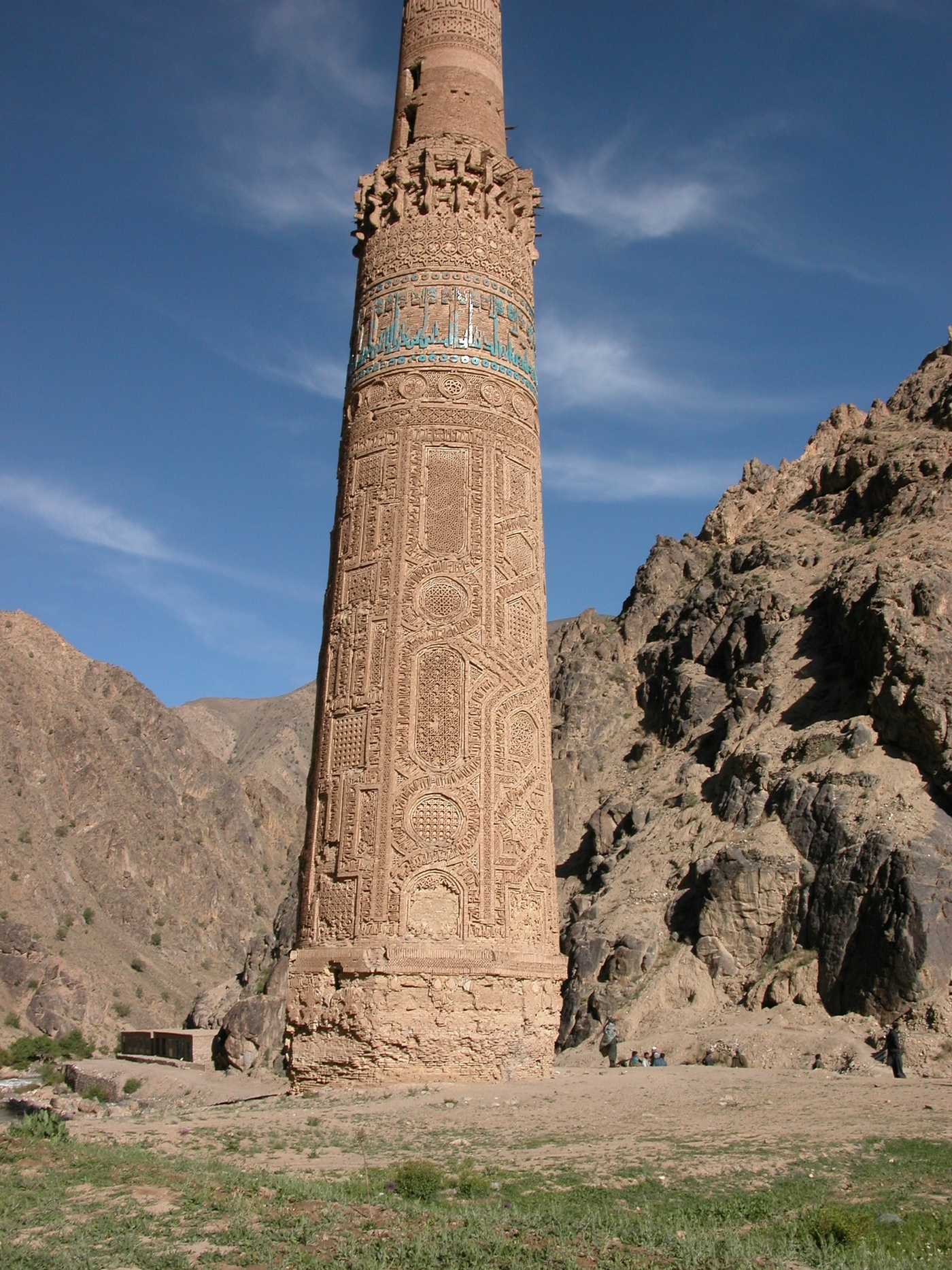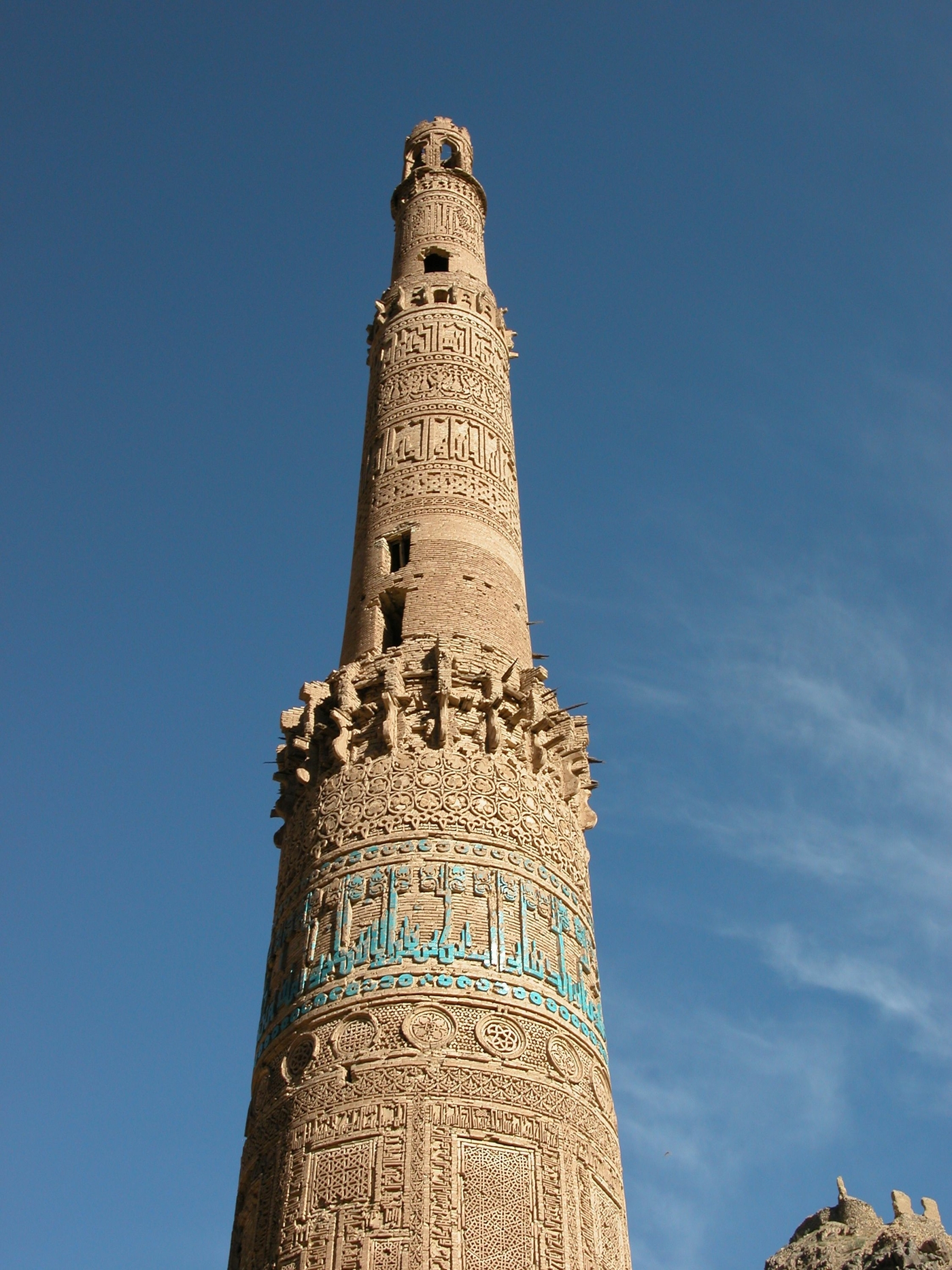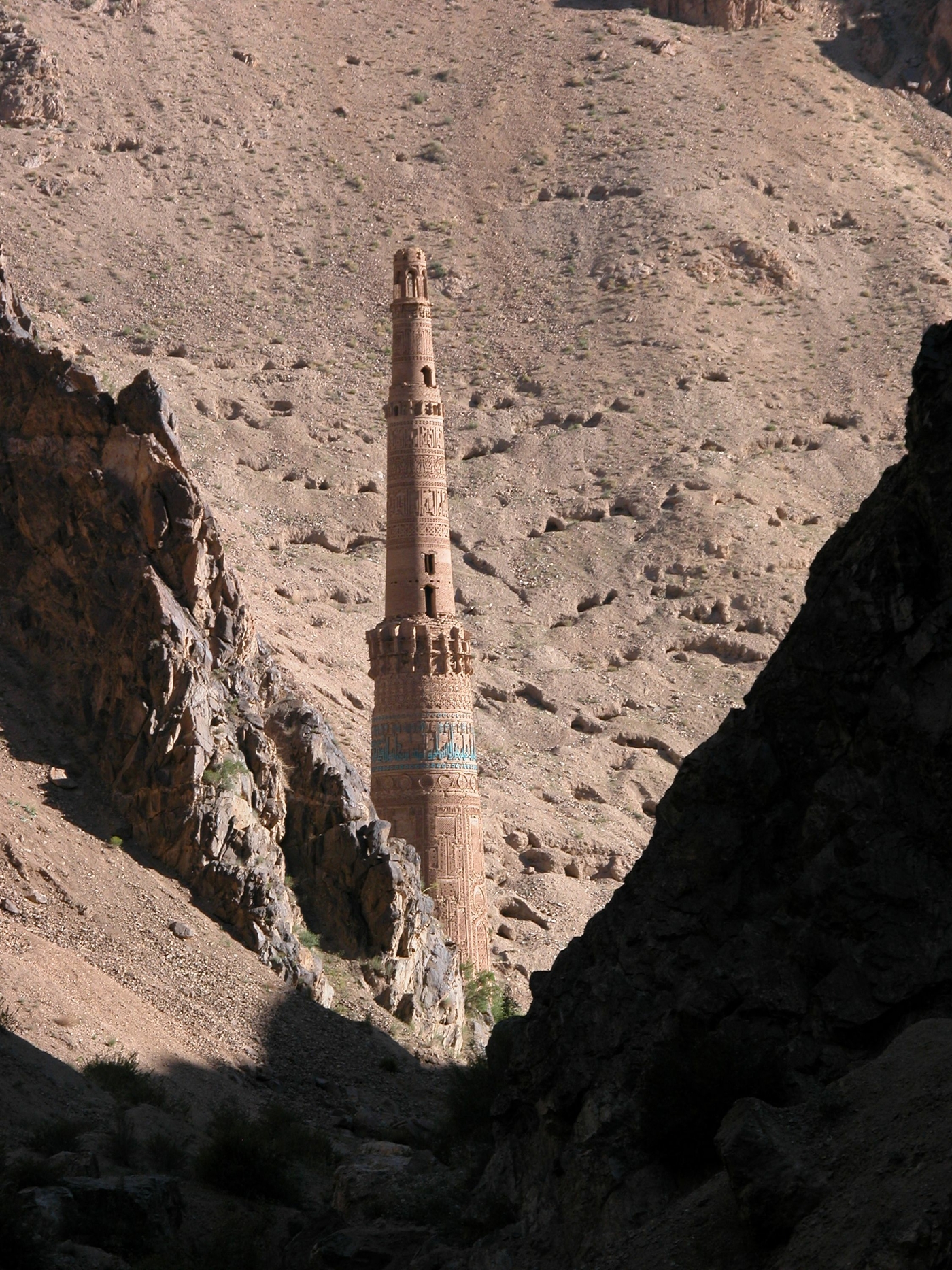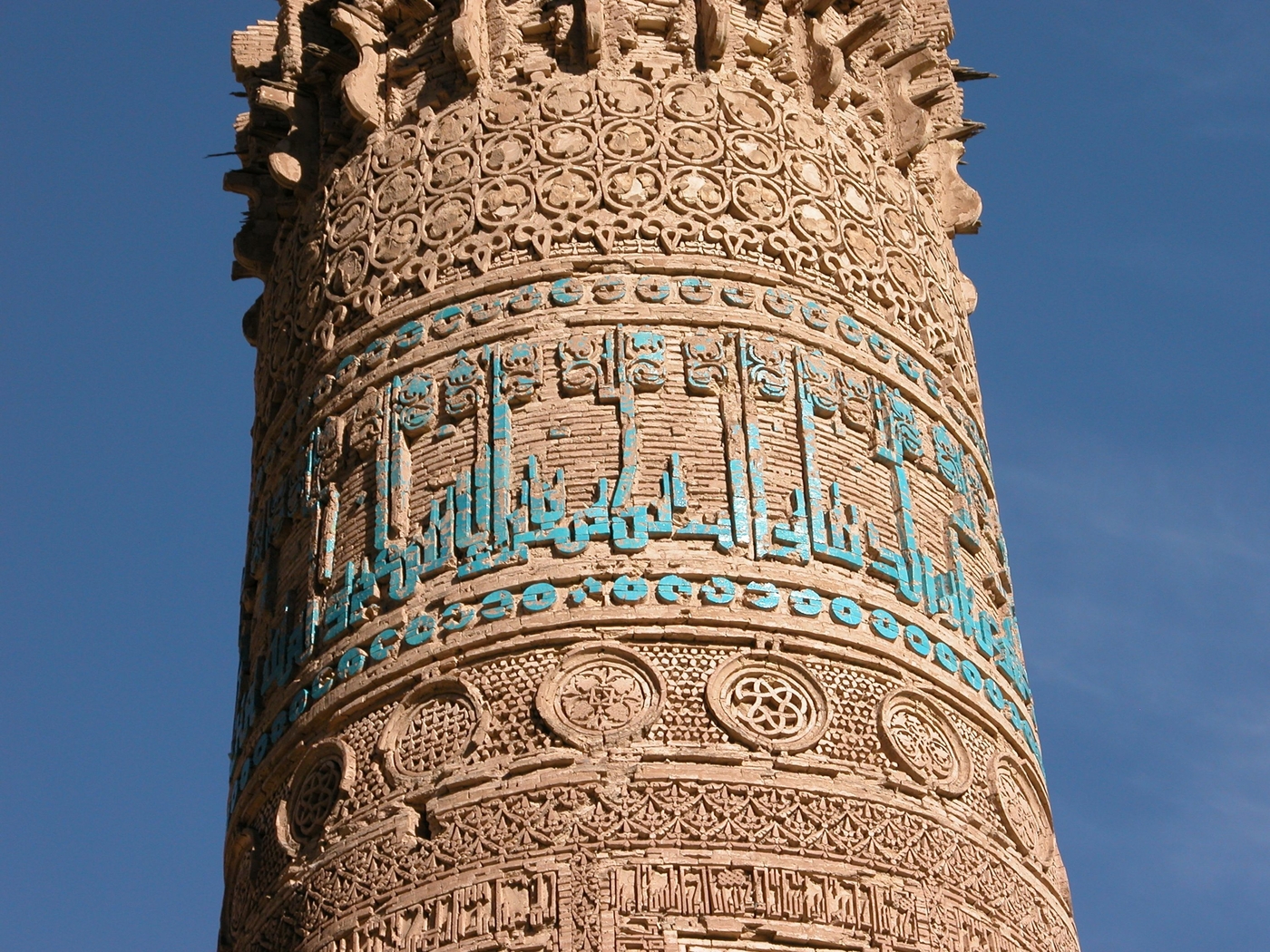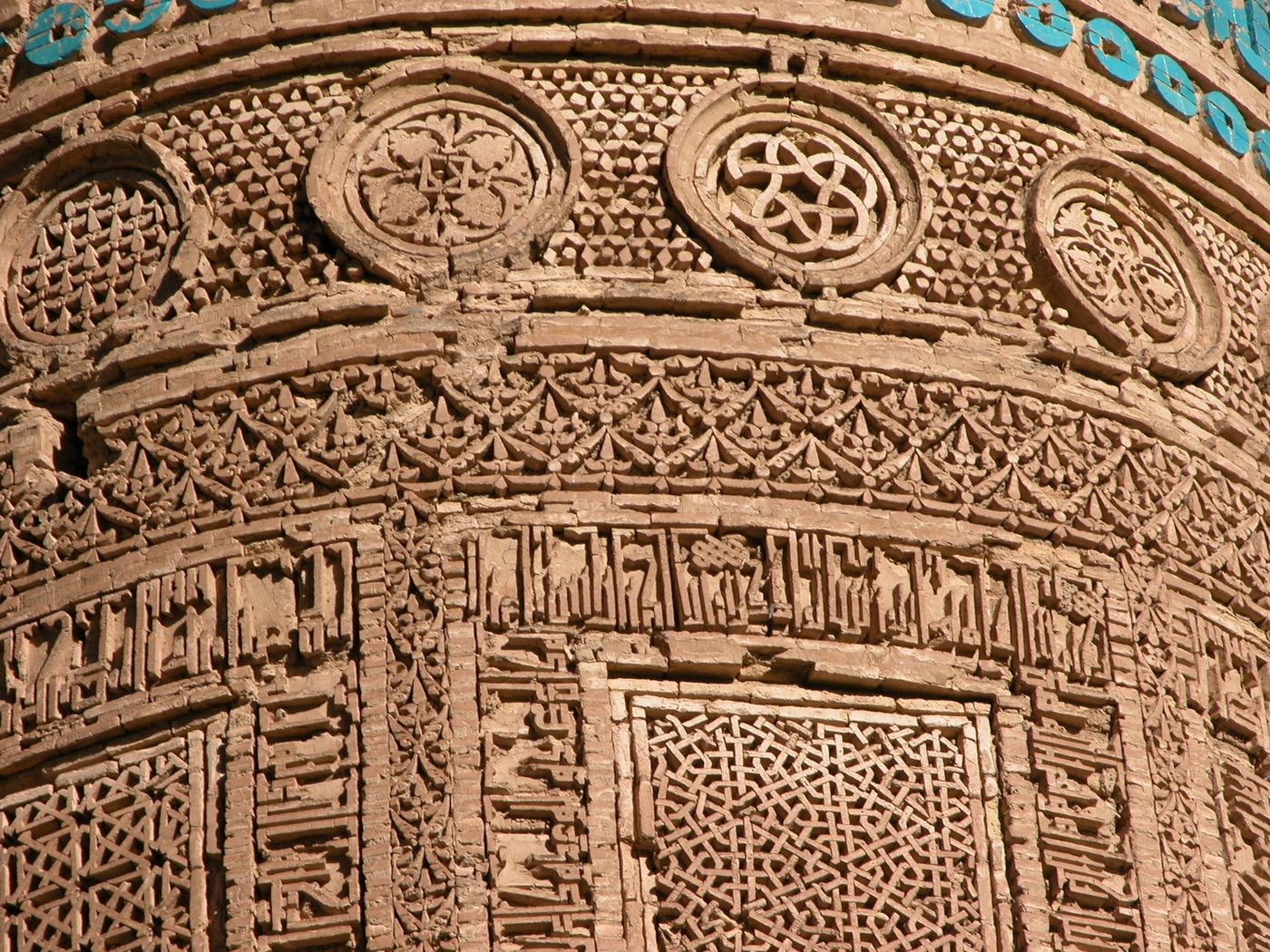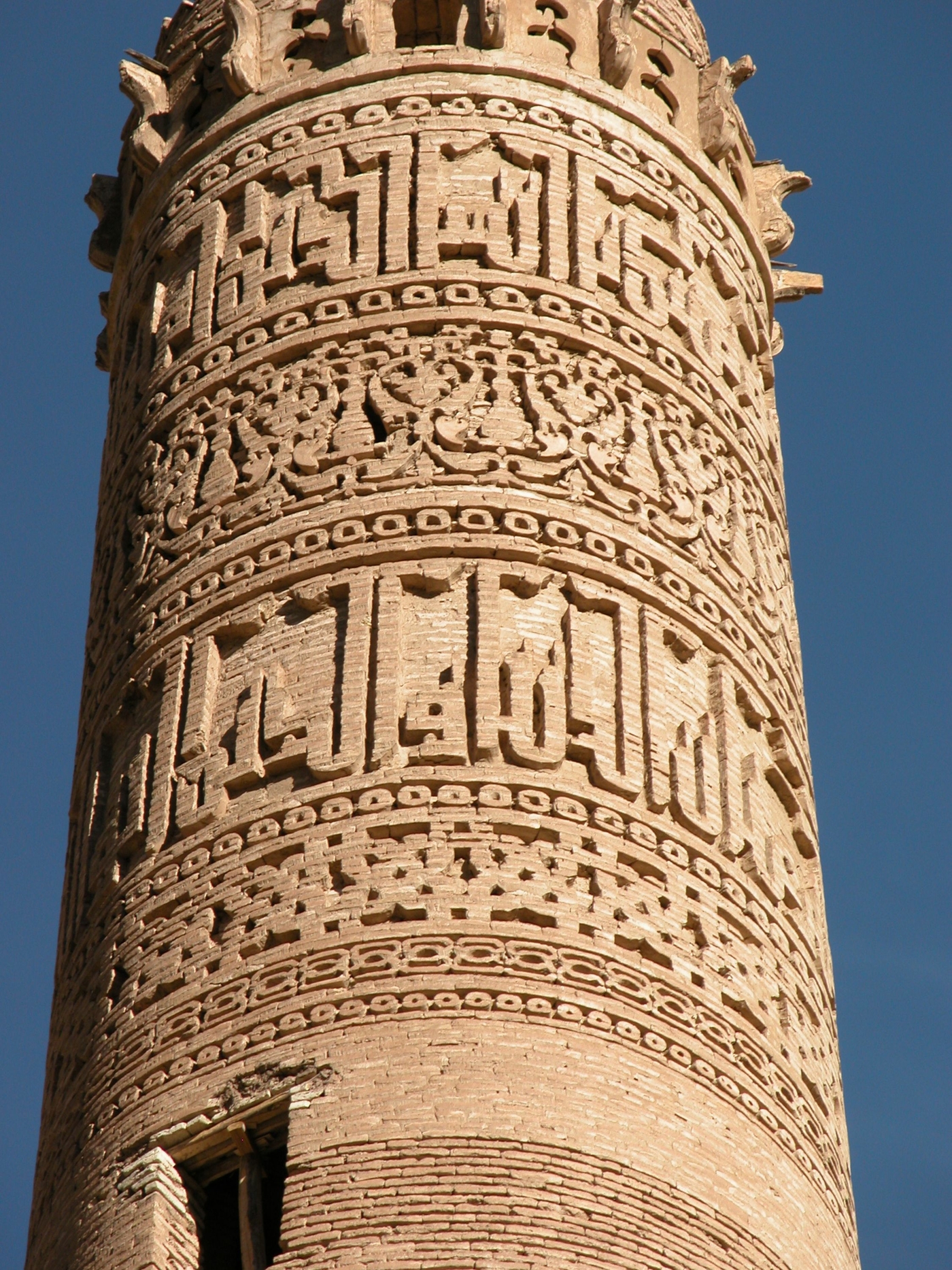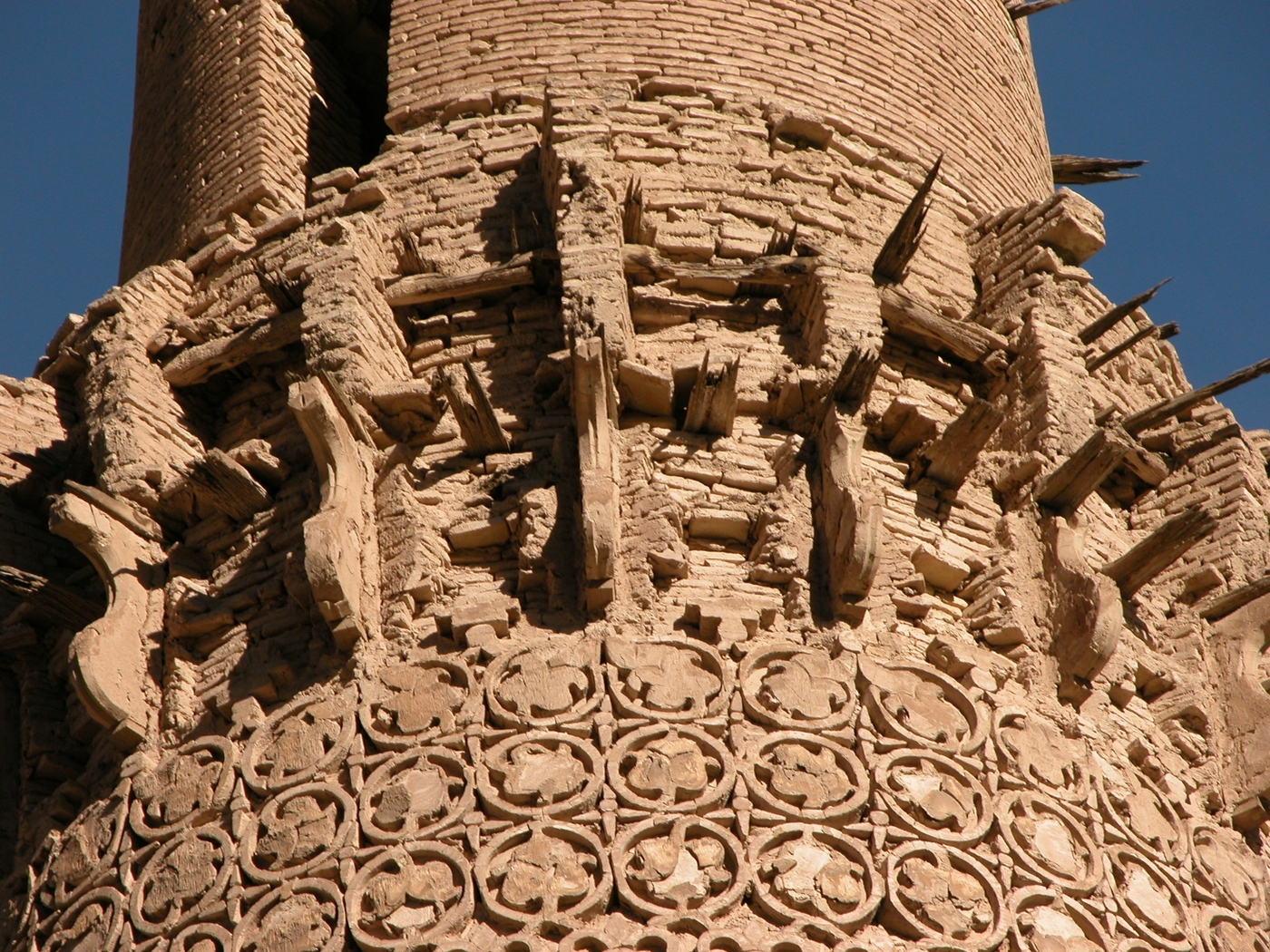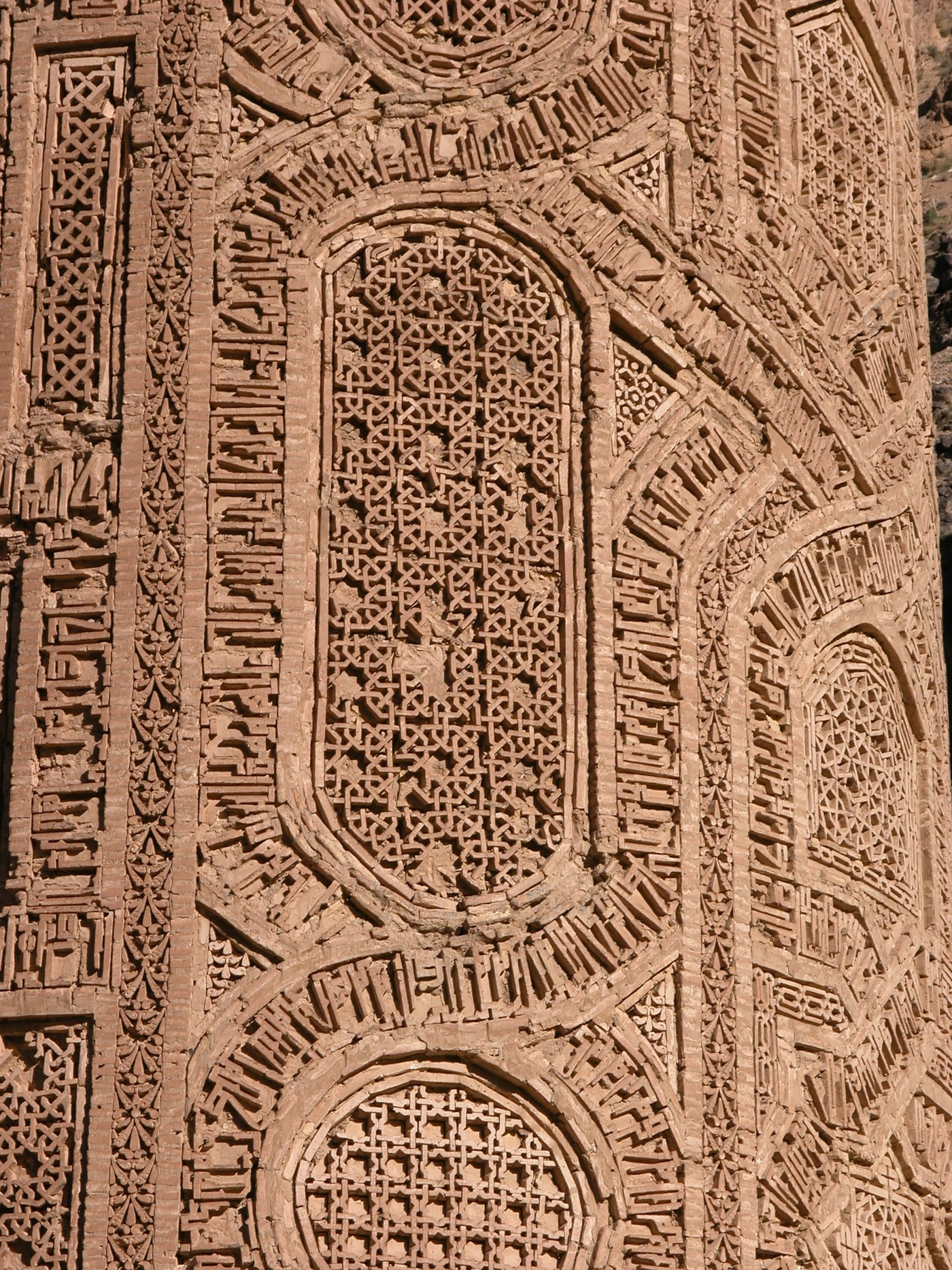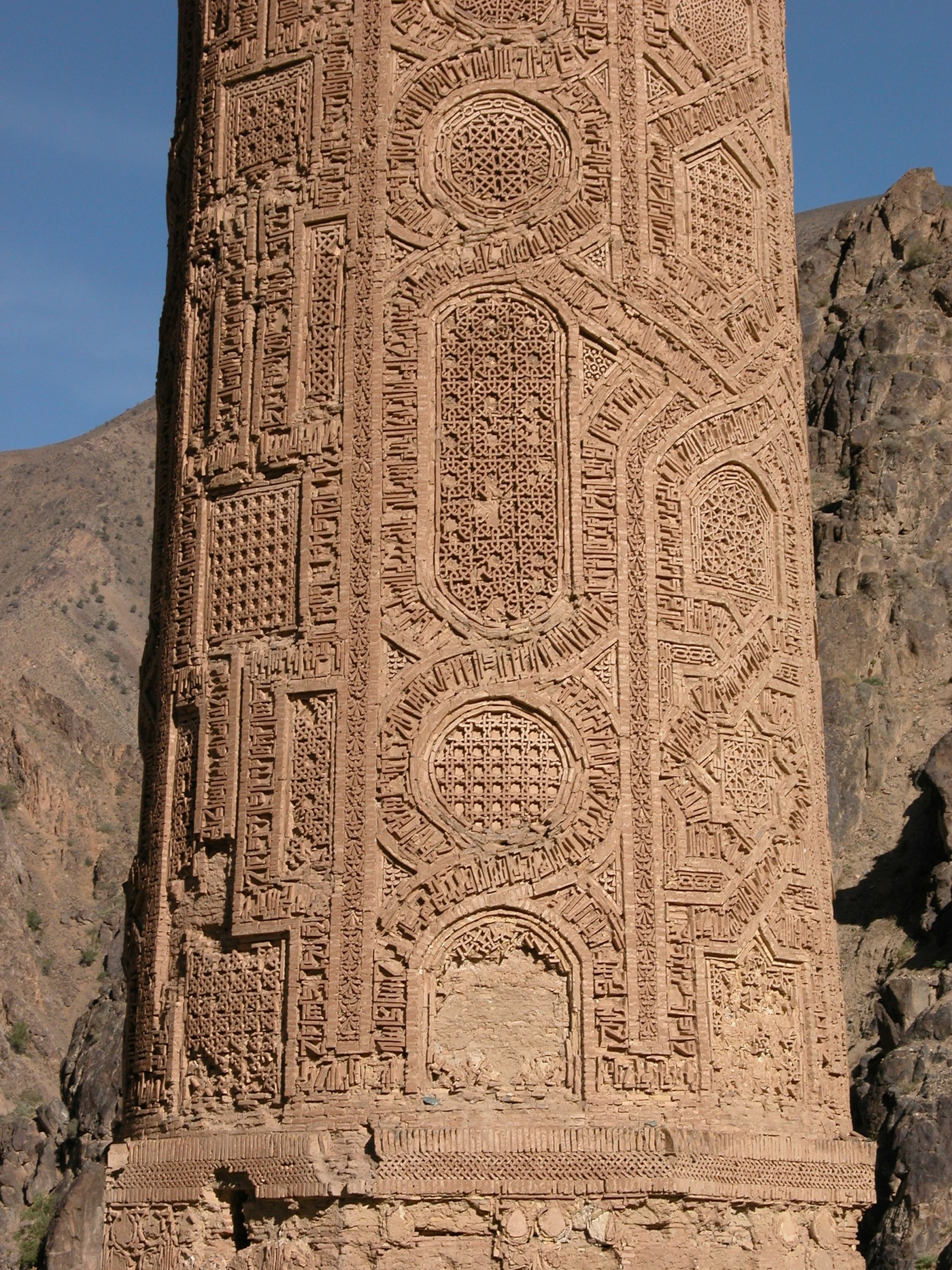Jam
Its remote location in the Afghan mountains makes it difficult for visitors to access the "minaret" of Jam, one of the most famous architectural sights in Afghanistan.
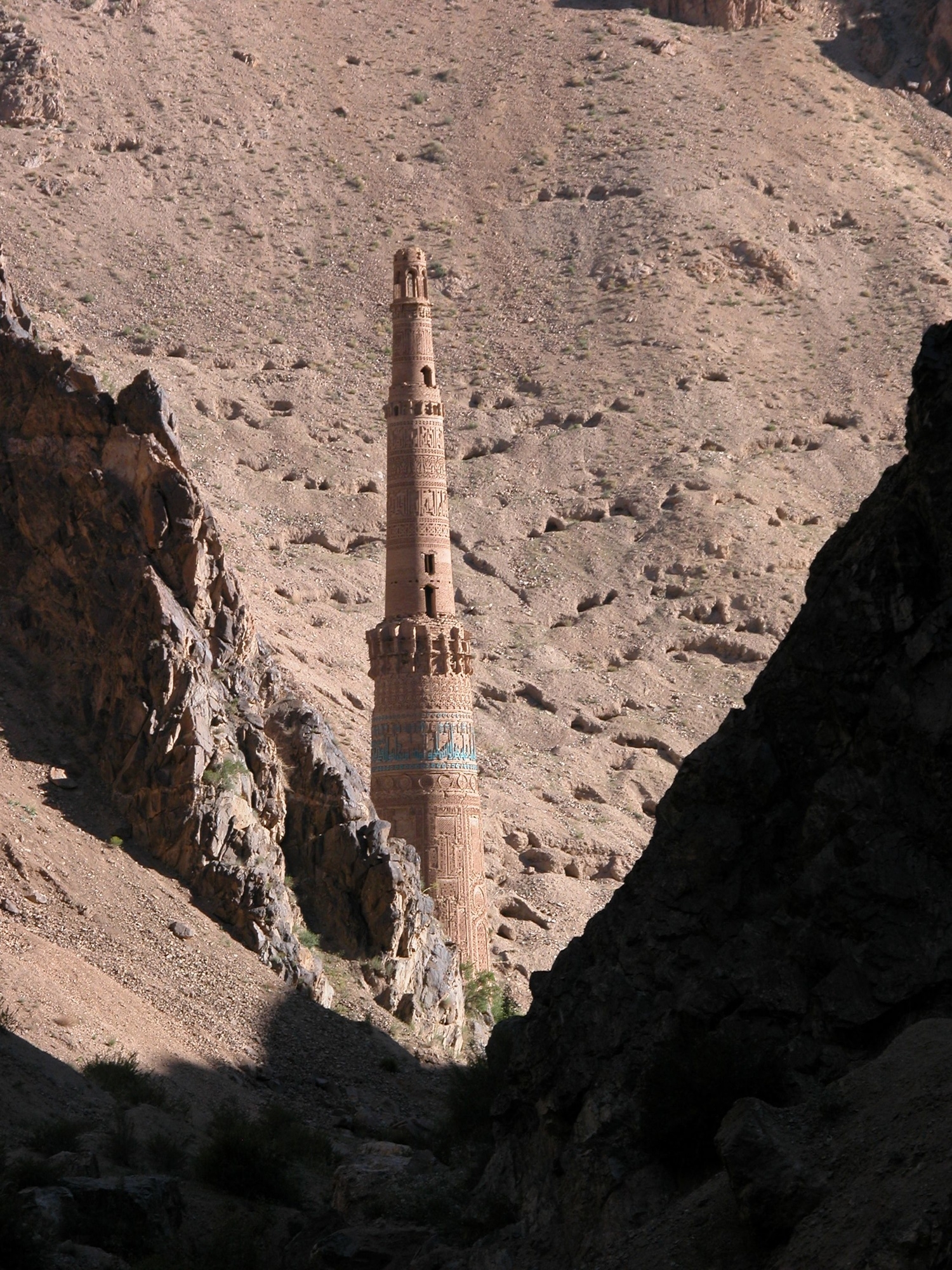
The site of Jam in Ghor Province, on the banks of the Hari-rud River, which takes its source in the centre of Afghanistan and flows towards Herat and Iran, is best known for its tower, once believed to be a minaret, which today stands at a height of up to 65 metres.
A masterpiece of Ghurid architecture
The kufic inscription that is part of its decorations tells us that it was built in 1192 by the Ghurid sultan Giyat ud Din (1153–1204). It is one of the most beautiful examples of an architectural style that, from central Asia to India, reveals the mastery and originality of the architects of this period.
A forgotten monument
Located in an area that is very difficult to reach due to the mountainous landscape and its distance from the centres of power, it was recorded at the end of the 19th century by the Anglo-Russian commission charged with drawing up the boundaries of Afghanistan, before falling into oblivion. In 1957, a group of French and Afghan researchers from the DAFA lead by André Maricq made an initial scientific study of the monument. They realised that what had been interpreted as a minaret was in fact a victory tower – a commemorative more than a religious monument.
The cradle of the Ghurid dynasty?
Built mainly from fired bricks, only a small part of its varnished architectural fired-earth decoration has survived. In the surrounding area, many remains attest to human occupation, perhaps corresponding to the town of Firouz Kouh, capital of the Ghurid sultans and cradle of the dynasty of the same name which, from the centre of Afghanistan, forged a vast empire stretching from Iran to northern India, encompassing large swathes of Central Asia. Funerary steles bearing Hebrew inscriptions were also found in this area, suggesting the existence of a Jewish community, the history of which is yet to be written.
A fragile monument
The "minaret" of Jam is a fragile monument, isolated architecturally and threatened by flood waters from the Hari-rud and the impact of rain and wind that have mainly affected the architectural decor, in addition to creeping erosion caused by climate change.
Inscribed on the World Heritage List in 2003, it is monitored as closely as its remote location and, above all, security conditions allow.



